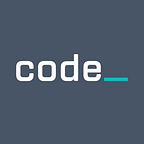10 Open Source Projects to Try Over the Holidays
Published in
4 min readDec 19, 2017
By The Code.gov Team
This holiday season when you’ve had your fill of food, and the newness of all the gadgets you’ve received has worn off, and you’re surfing the internet looking for something to do, the Code.gov team has you covered — try these open source software projects brought to you by the U.S. government:
- U.S. Web Design Standards — Created by the General Services Administration’s 18F, these are a set of website coding norms that provide modern design and functionality to government websites, including compliance accessibility requirements found in Section 508. The standards are grouped into user interface (UI) components, webpage templates, design principles, etc., and the site hosts sections to help users get started. All of the standards (code snippets and the standards website) are open source for community engagement and enhancement.
- WALKOFF — Built by the National Security Agency (NSA) to integrate and automate components faster, easier and at less cost to the government. The goal of WALKOFF is to create an interoperable framework to automate the repetitive tasks slowing you down. WALKOFF is open source software and community driven, meaning the open source community builds apps that are WALKOFF enabled. WALKOFF has multiple use cases, including cybersecurity, systems administration, analytics and internet of things. It currently has 25 open source apps with which it will work, ranging from Linux Scripting to Watson Facial Recognition to Tesla to Weather. But you could always build another this holiday season. That way when you return to work, you can tell your coworkers you spent the holidays contributing to an NSA project!
- Dshell — Developed by the Army Research Lab, Dshell is a network forensic analysis tool that allows network and security operations centers to quickly triage security attacks as they occur, reducing the time from the start of an attack to the time a successful defense can be mounted. Dshell is actively used by the Army as a network security tool and has been released open source, gathering a large number of external contributions (nearly 1,200 forks already)!
- WNTR — The Environmental Protection Agency open sourced this software that looks at the resiliency of our drinking water systems in the face of multiple challenges, including aging infrastructure, water quality concerns, supply and demands, natural disasters and environmental disasters, among others. The system allows EPA to predict how drinking water systems will react during these disruptive incidents so water utilities can plan accordingly should they occur.
- Clouseau — A tool the Consumer Finance Protection Bureau built searches a source code repository’s git history for undesirable text patterns such as passwords, secure shell (SSH) keys, and other personally identifiable information. The open source tool can be either installed at the developer’s machine or at the server and is designed to continuously run and scan for sensitive content.
- ANDI — Accessible Name and Description Inspector — People with disabilities must be able to access government websites. However, experienced developers can take several days to manually code a complex website so it’s accessible to people with disabilities, and often developers lack the in-depth skills needed to do so. This is why many government websites are neglected. The Social Security Administration developed ANDI to quickly help developers ensure their websites are accessible. The open source software is being used across the federal government by agencies like the Departments of Labor and Veterans Affairs. Code.gov uses it as well, helping the site find missing alt tags and nameless input fields.
- OSHA Heat Safety — The Department of Labor’s Occupational Safety and Health Administration (OSHA) built an app to help outdoor workers and their managers plan work throughout the day while being conscious of the heat index in real time. The Department of Health and Human Services, Centers for Disease Control and Prevention, National Institute for Occupational Safety and Health (NIOSH) also contributes to the app and has redesigned the app’s functionality, updated content to match newly-published CDC NIOSH guidance, and co-branded the app with OSHA. NIOSH also plans to make the content in the app appeal to a wider audience.
- Animal Disease Spread Model (ADSM) — Developed by the Department of Agriculture, ADSM is a portable application with desktop and web-based user interface (UI) that simulates the spread of animal diseases among animal herds. The model assists decision makers and educators in evaluating responses to animal disease incursions. ADSM includes a simulation engine and a front-end application that captures parameters, runs the simulation, and displays the results. Both parameters and simulation results are stored in a SQLite file.
- College Scoreboard — This Department of Education website allows those considering college to find schools that not only would meet their wants and needs, but also informs them of other schools with better outcomes that fit their criteria. It allows users to compare and contrast schools according to ”fit” and other factors so people find schools best suited to them, and ensure a broad and flexible definition of elements that contribute to “fit.”
- Timeline JS3 — The National Archives and Records Administration created this timeline to embed in your website to help tell stories. It’s open source software and totally awesome. We can’t wait to find an excuse to use it on Code.gov.
These are just 10 of the thousands of projects you can explore, contribute to, and #codefortheholidays at Code.gov. From the Code.gov team to you and yours — Happy Holidays!
